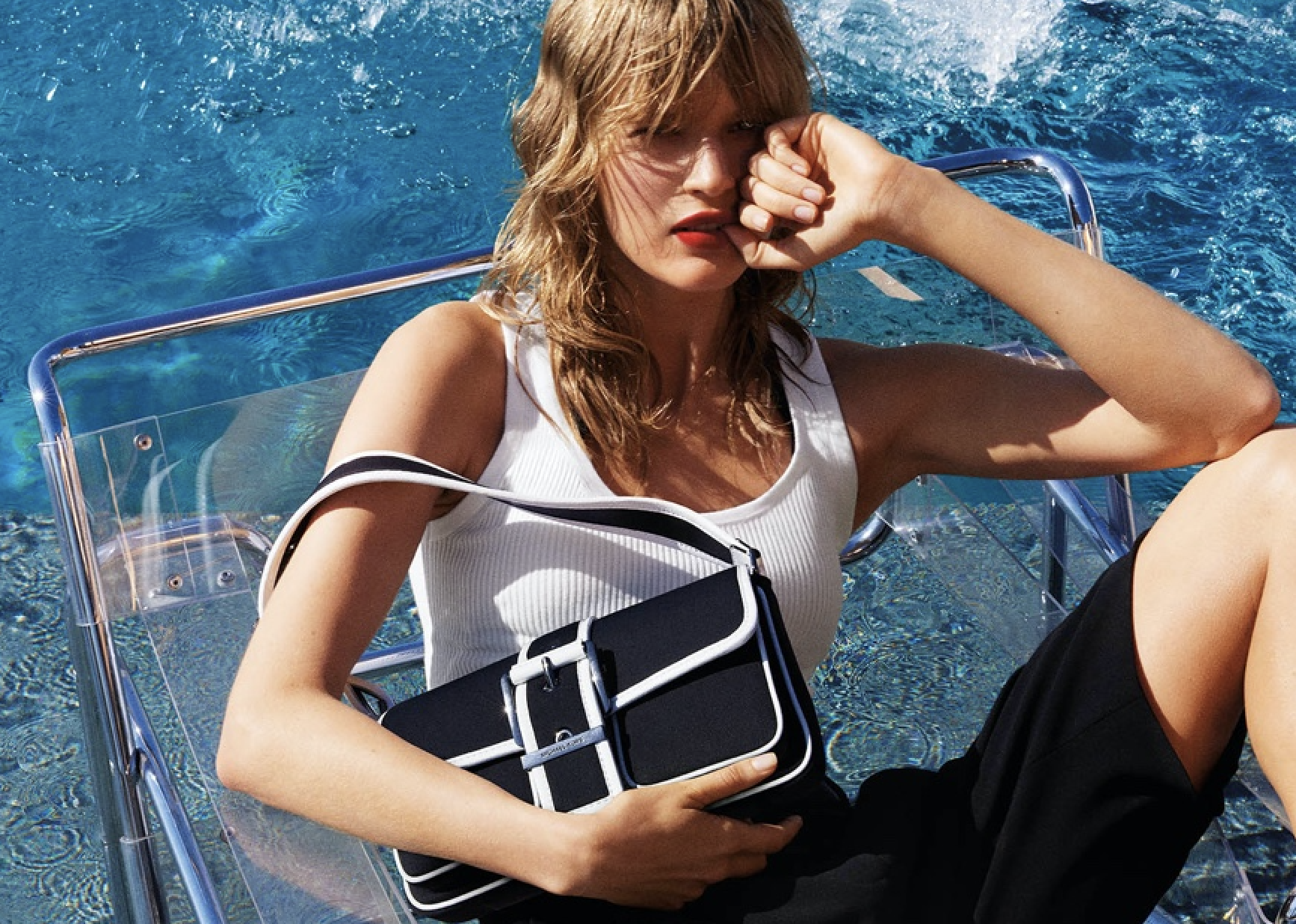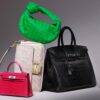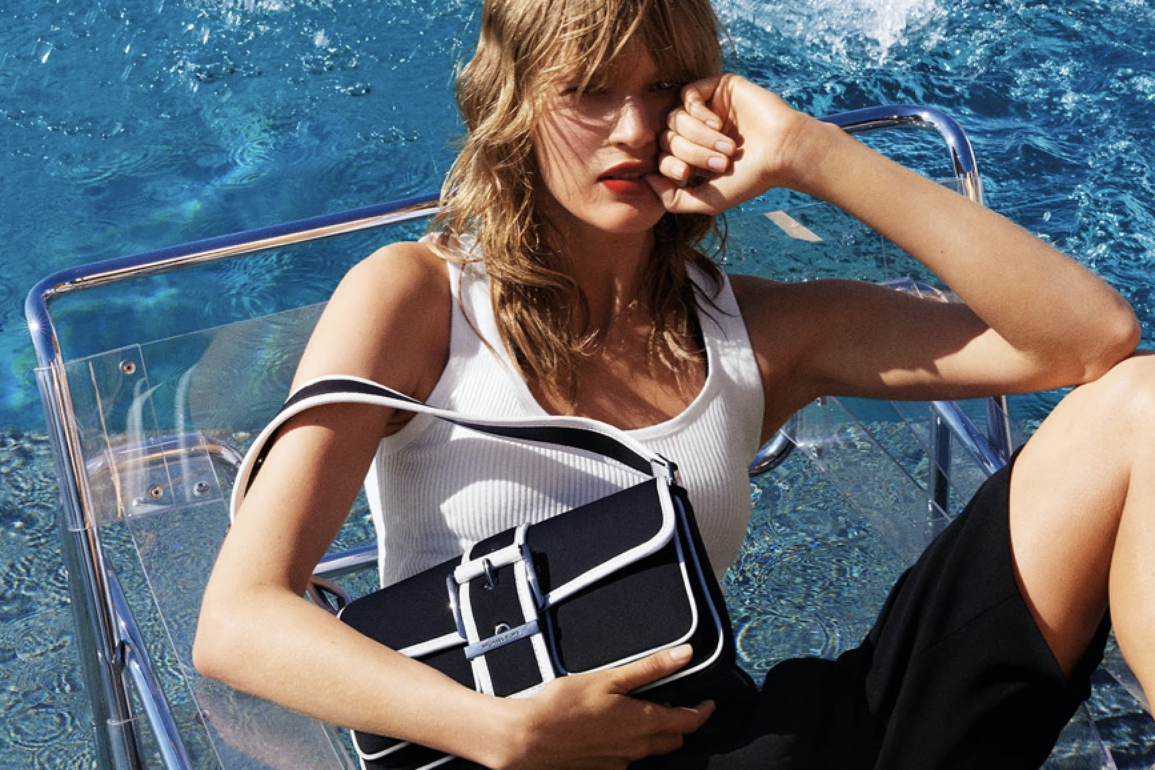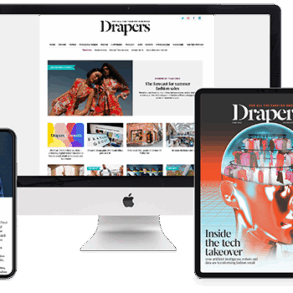
The Federal Trade Commission (“FTC”) filed a widely-anticipated lawsuit on Monday to block Tapestry, Inc.’s $8.5 billion acquisition of Capri Holdings Limited, a deal that the regulator says “seeks to combine three close competitors – Tapestry’s Coach and Kate Spade brands and Capri’s Michael Kors.” If permitted, the deal would “eliminate direct head-to-head competition between Tapestry’s and Capri’s brands,” according to the FTC, and would also “give Tapestry a dominant share of the ‘accessible luxury’ handbag market,” a term coined by the New York-based group “to describe quality leather and craftsmanship handbags at an affordable price.”
According to the FTC’s somewhat heavily-redacted administrative complaint, the Tapestry, Capri deal has raised red flags because it “would eliminate fierce head-to-head competition on many important attributes including price, discounting, and design,” resulting in “tens of millions of Americans that purchase Coach, Kade Spade, and Michael Kors products fac[ing] higher prices.” In other words, if Tapestry acquires Capri, “Tapestry would gain a dominant market share in the ‘accessible luxury’ handbag market, dwarfing every other competitor” to the detriment of American shoppers.
Defining the Relevant Market
Setting the stage, the FTC establishes what will be one of the critical (and most contested) elements in the newly-filed case: The relevant market. According to the market regulator, “Coach, Kate Spade, and Michael Kors brands compete to sell ‘accessible luxury’ handbags to millions of American consumers each day,” noting that “industry participants recognize a distinct market for ‘accessible luxury’ handbags, which have peculiar characteristics, as well as distinct prices and consumers and unique production facilities, that distinguish them from other types of handbags.”
The parties recognize that “accessible luxury” brands’ products occupy a price range that is “separate and distinct from mass-market offerings, which typically fall under $100, and true luxury handbags,” the FTC asserts. At the same time, it contends that the market for “accessible luxury” handbags also “has distinct customers: middle- and lower-income consumers who seek out high-quality items at affordable prices.” Still yet, “accessible luxury” handbags also have “peculiar characteristics that distinguish them from those offered by mass-market brands and by the European true luxury fashion houses.” These include …
> Quality. “Accessible luxury” handbags “boast quality materials and craftsmanship,” thereby, distinguishing them from mass-market handbags, which are “often composed of manmade materials such as polyurethane and nylon and produced in bulk in China,” as well as from “’true luxury’ handbags, [which] carry the imprimatur of the finest craftsmanship and materials and are nearly all manufactured in Europe.”
> Discounting and Promotions. “Accessible luxury” handbags are “characterized by a high degree of, and frequent, discounting and promotions, particularly around major shopping holidays like Black Friday and Mother’s Day.” This, according to the FTC, comes “in stark contrast to true luxury brands, [such as] Louis Vuitton, Prada, and Gucci, [which] all have a very public no-discounting policy; this is one way that true luxury brands distinguish their authentic products from counterfeits.”
> Production. “Accessible luxury” handbags are made in “unique production facilities, typically offshore in Asia but still with quality craftsmanship, which distinguishes their production from mass-market handbags made in bulk in China.”
> Omnichannel Approach & Sales Experience. “Accessible luxury” brands sell handbags through multiple sales channels: “Company-operated stores, including retail and outlet stores; online retail and outlet websites; and wholesale stores (e.g., Nordstrom’s, Macy’s, TJ Maxx, Ross). And their in-store shopping experience is also widely available throughout the United States – not just in metropolitan centers and big cities such as New York, Los Angeles, or Miami.” On the other hand, “true luxury handbag brands narrow the channels through which a customer can acquire their products, offering a more exclusive shopping experience.”
As for geography, the FTC states that the parties also compete in a “releavnt geographic market of the U.S.”
The FTC’s overarching focus on “accessible luxury,” a term that is mentioned at least 68 times in the complaint, is interesting and surely, strategic. Chances are, this distinction is a way for the FTC to shape the definition of the relevant market in its favor by separating out some of the biggest players in the fashion/luxury space, namely, Chanel, Hermès, and the brands owned by groups like LVMH, Kering, and Richemont, all of which maintain sizable marketshare – and contribute to competition – in the U.S. market.
The FTC is looking to establish a clear distinction between the “luxury” and “accessible luxury” markets and limit the relevant market accordingly, and the regulator specifically name-checks “Chanel, Louis Vuitton, and Hermes” as examples of “luxury,” “true luxury,” “high-end luxury” or “European luxury” brands in its effort to do so. On the other hand, Counsel for Tapestry and Capri will undoubtedly argue in defense of their deal that no such distinction exists and that brands across the allegedly-separate “luxury” and “accessible luxury” segments regularly compete in terms of products, price, consumers, etc., thereby, broadening the definition of the relevant market and the level of competition at play both before and following the completion of the proposed merger.
Eliminating Competition Between Tapestry, Capri
At the crux of the FTC’s case is its allegation that “the elimination of head-to-head competition between Coach, Kate Spade, and Michael Kors makes the proposed acquisition unlawful,” specifying that a merger is unlawful if it “substantially lessens competition between the parties, as recognized by the Merger Guidelines.” With this in mind, the Lina Khan-chaired FTC sets out several key points in furtherance of its claim that the proposed deal will be anticompetitive, including …
> Coach, Kate Spade, and Michael Kors are “close competitors” in terms of their pricing and discounts; marketing (“competition between the parties is particularly fierce in internet search advertising”); brick-and-mortar store footprints; innovation and design (Coach, Michael Kors, and Kate Spade “compete head-to-head on the quality of their products, including on designs of their handbags”); and labor (“evidence shows that Tapestry and Capri compete on metrics that affect other constituencies, including their thousands of employees”).
> There is “a reasonable probability that the proposed acquisition will eliminate head-to-head competition between Coach, Kate Spade, and Michael Kors,” and the Merger Guidelines state that “[c]ompetition often involves firms trying to win business by offering lower prices, new or better products and services, more attractive features, higher wages, improved benefits, or better terms relating to various additional dimensions of competition.” All of those forms of competition are here, the FTC asserts, and very well might be eliminated if the proposed acquisition is allowed to proceed.
> Tapestry “intends to raise prices for Michael Kors through reducing discounts and promotions and pulling back on wholesale (where it has less control over pricing), which is exactly what Coach did in 2016 and Kate Spade later did following its acquisition in 2017,” the FTC asserts.
Presumptively Unlawful, Serial Acquisitions & Countervailing Factors
The FTC contends that aside from the alleged “elimination of fierce head-to-head competition” that would result from the deal, the proposed acquisition is also presumptively unlawful because it “significantly increases concentration in the ‘accessible luxury’ handbag market.” In particular, the FTC states that the proposed deal is “presumed likely to create or enhance market power – and is presumptively illegal – in the ‘accessible luxury’ handbag market because it increases the HHI in the market for “accessible luxury” handbags in the U.S. by over [a redacted number of] points, leading to a post-acquisition HHI points and a post-acquisition market share for Tapestry of considerably more than 30 percent.”
(The Herfindahl-Hirschman Index measures the market concentration of the 50 largest companies in a particular industry to determine whether there is “sufficient competition among industry participants to avoid price-setting and other anticompetitive behaviors.”)
Still yet, the FTC maintains that the proposed acquisition is part of Tapestry’s strategy of serial acquisitions. “Not only would the proposed acquisition create a North American ‘accessible luxury’ handbag powerhouse, but Tapestry would be able to leverage its combined size for even more acquisitions of rivals in the ‘accessible luxury’ handbag market by which it could entrench its position and make it harder for smaller rivals and new entrants to compete.”
And finally, the FTC states that there are “no countervailing factors to justify the proposed acquisition,” especially when it comes to data. “The parties’ treasure trove of consumer data is also a barrier to entry,” the FTC says, noting that “Tapestry has publicly and internally hailed its vast access to consumer data to leverage strategic promotions, increase prices, and respond to its customer demands. Capri has done the same. This data provides both Tapestry and Capri with a significant competitive advantage.”
With the foregoing in mind, the FTC contends that the proposed merger: (1) constitutes an unfair method of competition in violation of Section 5 of the FTC Act; and (2) may substantially lessen competition, or tend to create a monopoly, in the relevant antitrust markets in violation of Section 7 of the Clayton Act, and is an unfair method of competition in violation of Section 5 of the FTC Act.
THE BOTTOM LINE: As TFL previously reported, whether the FTC can successfully stand in the way of the proposed Tapestry, Capri merger will primarily depend on its definition of the relevant market and then what the HHI is.
The case is In the Matter of Tapestry, Inc. and Capri Holdings Ltd., 9429.
This post was originally published on this site be sure to check out more of their content.








